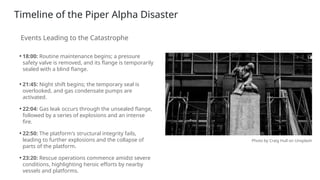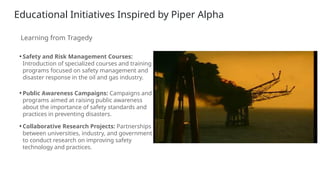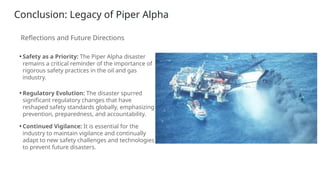The Piper Alpha disaster, occurring on July 6, 1988, was a catastrophic incident on an offshore oil platform that resulted in the loss of 167 lives and extensive financial damage, leading to significant changes in safety regulations and emergency response protocols in the oil industry. Investigations revealed critical failures in maintenance, communication, and safety measures, prompting the Cullen inquiry which made 106 safety recommendations that influenced global offshore oil operations. The aftermath emphasized the importance of a robust safety culture, rigorous training, and improved emergency preparedness to prevent future disasters.




























